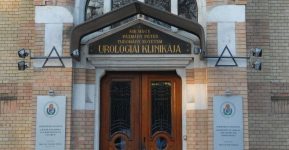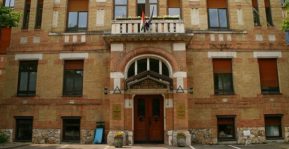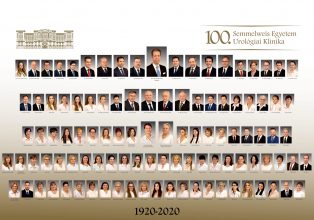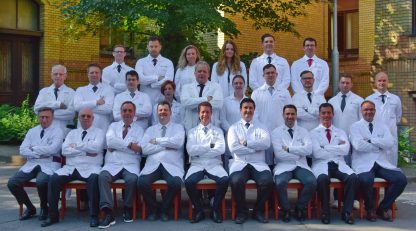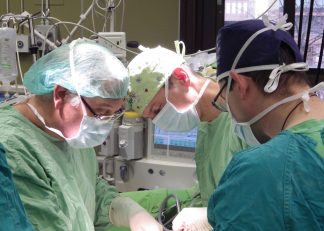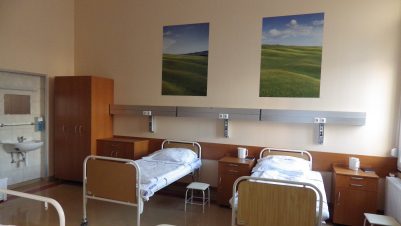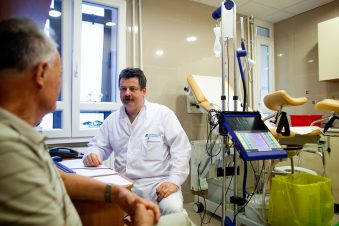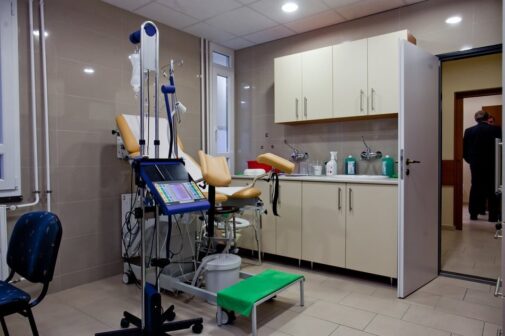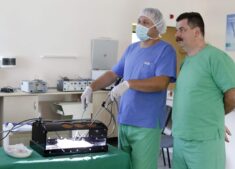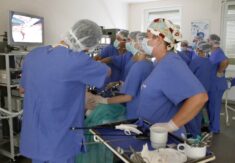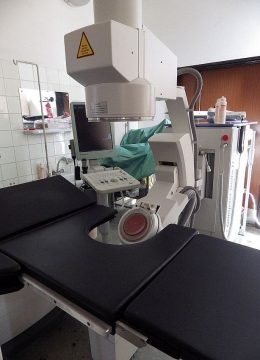The Department of Urology, founded in 1920, was the first academic institute in Europe to become independent from surgery. The Department moved to its present building in 1936. Based on the 1922 guestbook, there were several American and Western European visitors at the Urological Department who came to study modern urology between the two world wars. The country’s only urological museum, located within the Department, recalls this past.
Profile
The main fields of activity are: urogenital tumours and their chemotherapy, urogenital infection and inflammation, urinary stones, urinary incontinence, reconstructive surgery, congenital and acquired disorders of male sexual organs, male infertility, and erectile dysfunction.
Education
In addition to the teaching of urology to medical students in small groups in Hungarian, English, German, regular postgraduate courses on special issues are organised for residents, specialists and GPs. Twice yearly, a high level postgraduate teaching session is also organised at the Department, where outstanding personalities of European urology present as invited lecturers.
The Department has been an EBU-certified clinic since 2008.
Health Care
As a result of thorough reconstruction in 1990, the Department has three wards with 59 beds for inpatients and five operating theatres. 40,000 patients are treated yearly at the outpatient department, where the following special units can be found: uro-oncology, urinary stone clinic, congenital abnormalities, inflammatory diseases of genito-urinary tract, management of voiding dysfunctions, andrology, and sexology. Extra-corporeal shock-wave lithotripsy (ESWL) is performed as well, both US and X-ray targeted.
Almost all diagnostic and therapeutic procedures of urology are applied at the Department. A number of new methods were introduced to Hungarian practice by the Department. The diagnostic work is supported by four ultrasound machines, two with colour-doppler, transrectal probe and modern X-ray tables. Since 2008, the Department has been equipped with a magentic chair for the treatment of incontinence.
Research
The extensive scientific activity of the Department is reflected by the numerous publications in national and international journals and the number of textbooks, handbooks and chapter contributions made by the Department’s staff. Most of the doctors are members of national and international societies and editorial boards. The largest urological library can also be found at the Department. In the research activity, a series of cooperations are performed with other departments of Semmelweis University, as well as with institutions of foreign universities.
